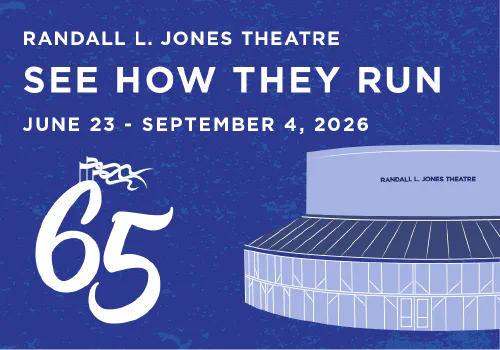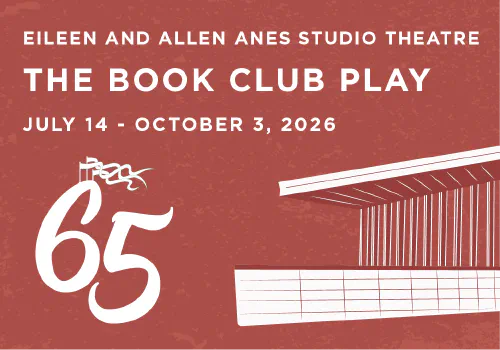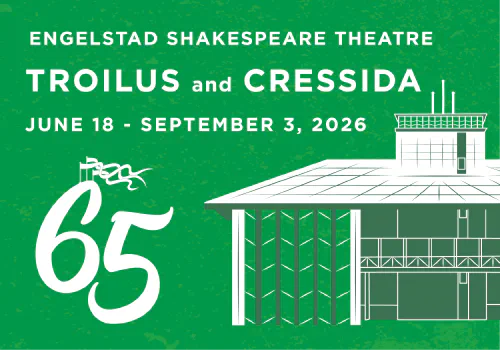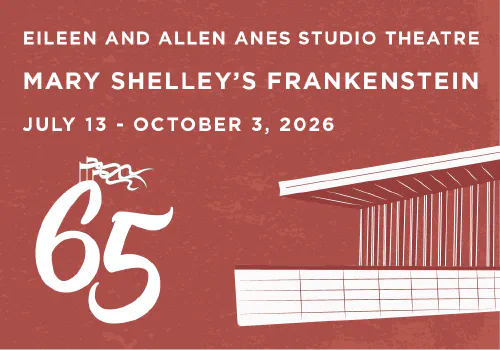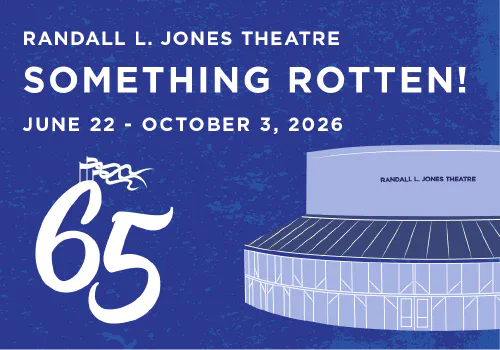NOTE: The articles in these study guides are not meant to mirror or interpret any particular productions at the Utah Shakespeare Festival. They are meant, instead, to be an educational jumping-off point to understanding and enjoying the play (in any production at any theatre) a bit more thoroughly. Therefore the stories of the plays and the interpretative articles (and even characters at times) may differ from what is ultimately produced on stage.
Also, some of these articles (especially the synopses) reveal the ending and other “surprises” in some plays. If you don’t want to know this information before seeing the plays, you may want to reconsider studying this information.
By Ace G. Pilkington
There has been almost as much ink splashed about in the battle over Richard III’s nature and deeds as there was blood spilled in the fight for his throne. Was he the scheming (though villainously charming) monster of Shakespeare’s portrait or the unfailingly virtuous and unrelentingly slandered hero defended by Josephine Tey? If historians are anything to go by, the dispute is all but over, and it is being resolved in Shakespeare’s favor. I do not mean to suggest that all the murders and deformities that Shakespeare ascribes to his Richard III now have scholarly proofs, but Richard’s greatest guilt, the elimination of the royal nephews who threatened his hold on the crown, is, if not conclusively proved, almost universally accepted.
Here then is a small survey of the judgments passed on Richard (and incidentally the beginnings of a reading list for those who want to pursue the controversy).
In 1956, Winston Churchill pointed out the major flaw in the pro-Richard (or revisionist) position: “It is contended by the defenders of King Richard that the Tudor version of these events has prevailed. But the English people who lived at the time and learned of the events day by day formed their convictions two years before the Tudors gained power. . . . Richard III held the authority of government. He told his own story . . . and he was spontaneously and almost universally disbelieved. Indeed, no fact stands forth more unchallengeable than that the overwhelming majority of the nation was convinced that Richard had used his power . . . to usurp the crown and that the princes had disappeared in the Tower. It will take many ingenious books to raise the issue to the dignity of a historical controversy” (A History of the English-Speaking Peoples, [New York: Dodd, Mead & Company], 486).
While there have, of course, been a number of ingenious books and theories in the almost forty years since Churchill wrote, his argument has not been refuted. In his 1976 The Wars of the Roses, Charles Ross explains Richard’s problems in establishing his power: “It took time to live down the legacy of suspicion and mistrust generated by the violence of his usurpation. Even in that ruthless age, many men were appalled by what they clearly believed to have been his crime against the princes” (London: Thames and Hudson, 100). In 1993, Michael Bennett, though he was not willing to declare Richard’s guilt to be incontrovertible, was sure that it was not the Tudors who first accused him: “What is clear is that over the course of the summer the populace of London, many of whom after all must have worked in or supplied the Tower, came to believe that they [the princes] were no longer alive” (The Battle of Bosworth [New York: St. Martin’s Press], 45).
Indeed, as time went on, Richard’s need to establish his innocence became greater rather than less. Not only the disaffection of the English populace but also the threat of Henry Tudor would have been sensibly reduced if the two boys had been alive and visible. The earl of Richmond’s royal ambitions could scarcely have continued alongside two surviving sons of Edward IV, no matter how many stories of their bastardy Richard III had spread. And Ricardian theories that Henry VII was guilty of the princes’ deaths come up against the inescapable fact that when Richard might have saved himself by producing living nephews, he did not. It is hard to escape the conclusion that he could not.
There are also, of course, the skeletons in the Tower. Found in 1674 during the reign of Charles II, they were, on the evidence then available, believed to be the remains of the murdered princes. Re-examined in 1933, they provided yet more evidence against Richard, and in the words of Robin Neillands, “These bones are probably those of the princes” (The Wars of the Roses [London: Cassell, 1993], 201).
Allison Weir, whose 1992 The Princes in the Tower is the most thorough recent examination of the Richard controversy, goes further. After cataloging the authorities who have argued the evidence of the skeletons, she concludes: “The findings of the experts were in all cases consistent with the bones being those of the Princes in the Tower. Although some questioned the findings of Tanner and Wright they did not discredit them; indeed, their conclusions substantiated them” (New York: Ballantine Books, 257). Those findings included ages for the young victims which make it nearly certain that their deaths occurred during Richard’s reign.
In the light of such evidence, it is scarcely surprising that almost all of Richard’s biographers (members of the Fellowship of the White Boar and the Richard III Society excepted) find him guilty. So Elizabeth Jenkins rejects the theories of Sir Clements Markham and Josephine Tey because “both leaned heavily on the assertion that there was no general rumour during Richard’s lifetime that he had murdered his nephews” (The Princes in the Tower [New York: Barnes and Noble, 1978], x). Charles Ross, in his widely admired 1981 Richard III, wrote: “In the final analysis, Richard III remains the most likely candidate by far to have murdered his own nephews. It is scarcely possible to doubt that they met their deaths by violence during the summer of 1483” (Los Angeles: University of California Press, 103 4). In A. J. Pollard’s judgment, “At best Richard was culpable for failing to protect their [the princes’] lives; at worst he himself was directly responsible” (Richard III and the Princes in the Tower [New York: St. Martin’s Press, 1991], 137).
Recent re-evaluations have even included endorsements for the historical accuracy of Thomas More and William Shakespeare. Thus, Allison Weir writes: “It seems highly likely that More’s account came very near to the truth” (169). And for Desmond Seward, who, in the course of a life-long fascination, moved from a belief in Richard’s complete innocence to a firm conviction of his guilt, “Shakespeare was nearer the truth than some of the King’s latter-day defenders” (Richard III: England’s Black Legend [New York: Franklin Watts, 1984], 15).
Ultimately (and ironically in light of the abuse that has been heaped on him by Richard’s defenders), Shakespeare may have created a more sympathetic character than the real Richard. After all, Shakespeare’s villain has a long history of abuse and the personal horror of his deformity to drive him to atrocities. He also has a nephew who would try almost anyone’s patience. The historical Richard—handsome, courageous, and successful–was pushed to crime by nothing more complex than ambition: he grasped for supreme power, and the blood he had shed rendered his grip fatally slippery.



